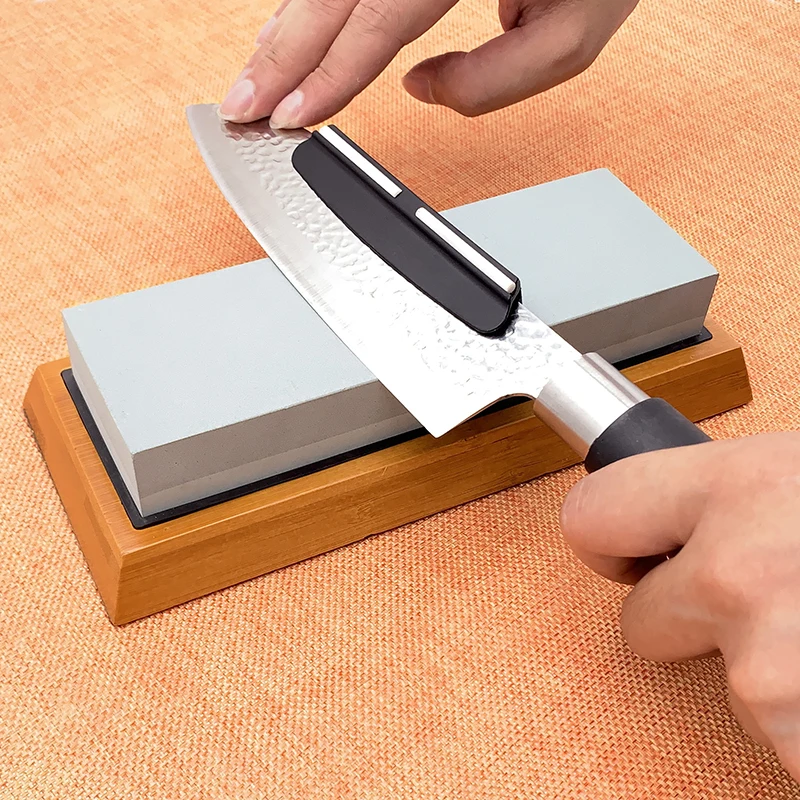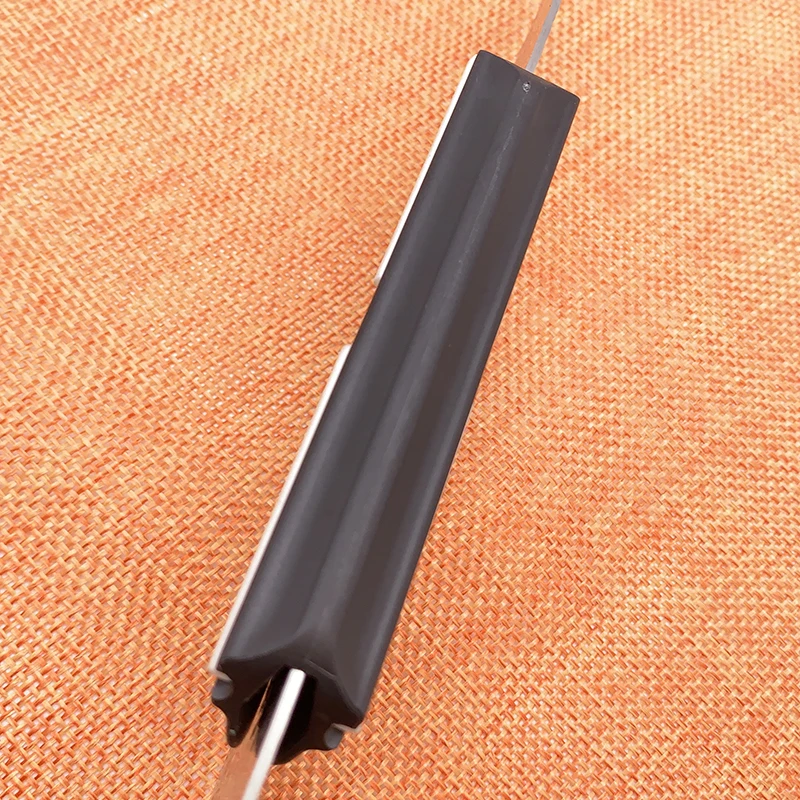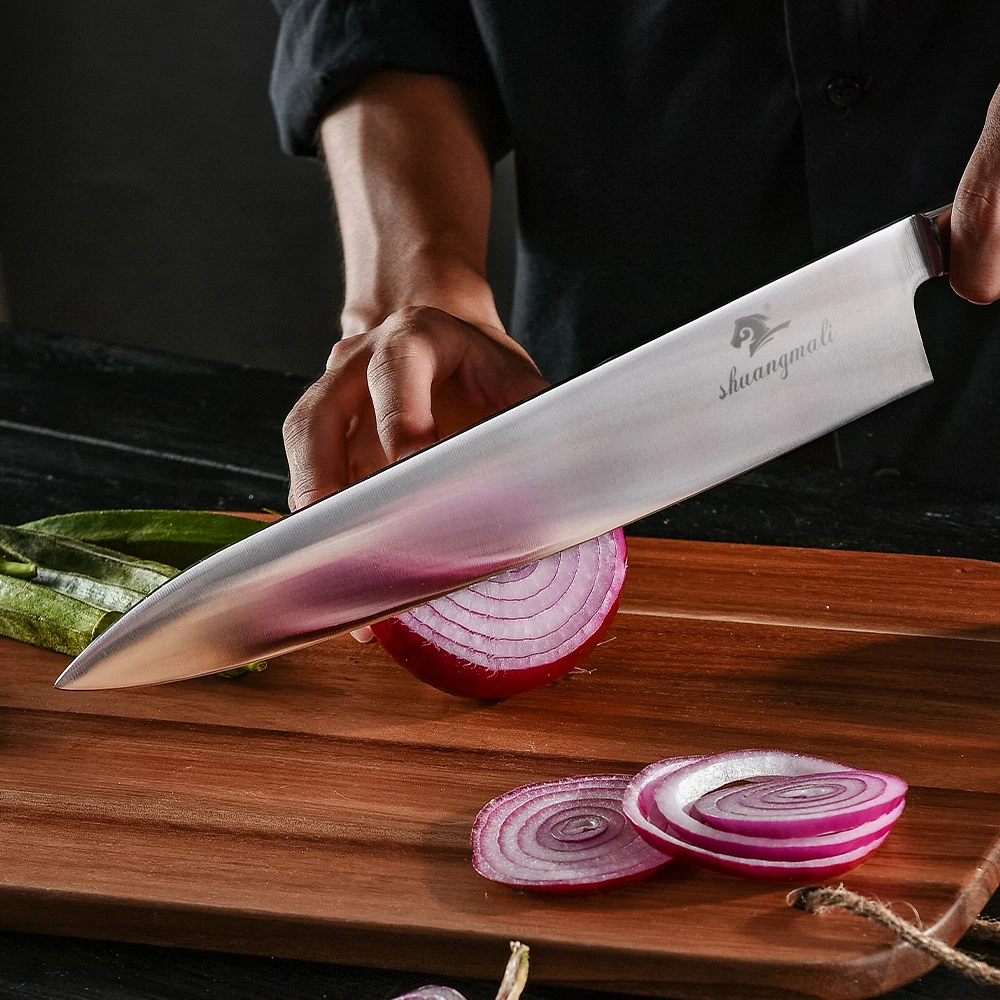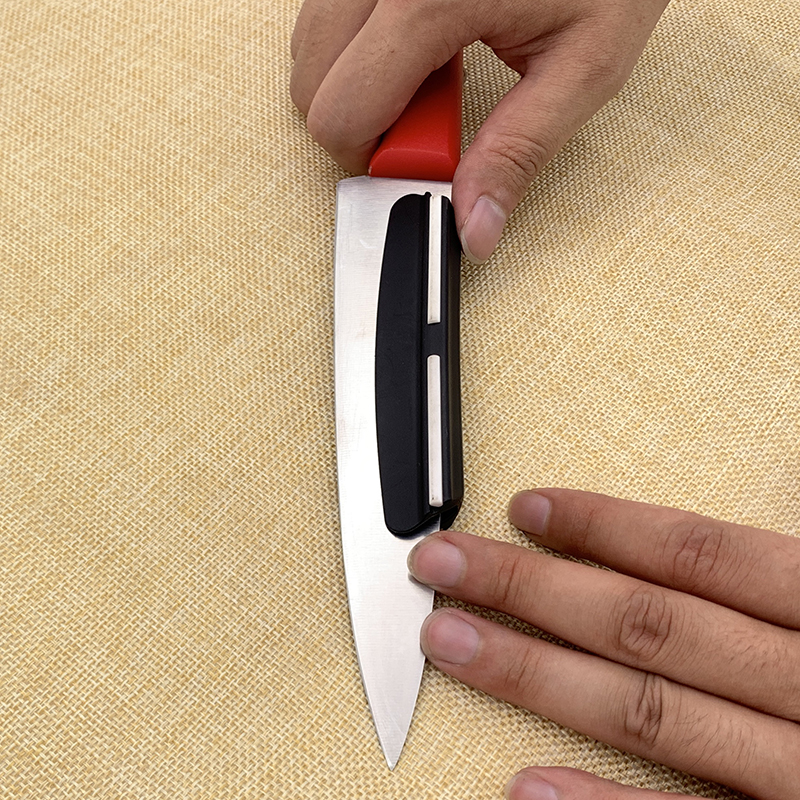Introduction
Sharpening kitchen knives is an essential skill for any cook, whether you are a beginner or a seasoned chef. A sharp knife makes cooking safer, easier, and more enjoyable. But did you know that the angle at which you sharpen your knife plays a crucial role in its performance? In this article, we will explore the importance of kitchen knife sharpening angle, the types of angles suitable for various knives, and how to find the right angle for your sharpening needs.

Importance of Sharpening Angles
The angle you choose for sharpening a knife significantly affects the knife’s cutting ability and durability. The sharpening angle refers to the angle formed between the blade and the sharpening tool. This angle influences how well the knife cuts through food, how long it stays sharp, and how the blade reacts during use.
When you sharpen a knife at too steep an angle, you create a thin edge. This thin edge can easily chip or bend, especially when cutting harder materials. On the other hand, sharpening at too shallow an angle leads to a thicker edge, which may not cut as effectively. Finding a balance between these two extremes is essential for achieving optimal cutting performance.
Different types of knives also require different angles. For instance, a chef’s knife typically has a sharpening angle between 15 to 20 degrees per side. This narrow angle allows for precise and effortless slicing. On the other hand, a knife designed for tougher tasks, like a cleaver, may require an angle closer to 20 to 30 degrees to withstand more force.
Types of Knife Angles
Common Knife Sharpening Angles
Knowing the common angles used for different types of knives can help you sharpen correctly. As mentioned earlier, chef’s knives, santoku knives, and slicing knives generally require finer angles. The 15 to 20 degrees per side is standard. This thin edge allows for finesse while cutting through delicate items like vegetables and fish.
Other knives, such as paring knives and utility knives, also fall within the 15 to 20-degree range. This makes them versatile and suitable for precise work. These knives benefit from a fine edge that helps in intricate tasks, like peeling apples or segmenting citrus.
Then there are serrated knives, often used for bread and tomatoes. These knives usually have a different sharpening process because of their unique serrations. Generally speaking, serrated knives should not be sharpened at a specific angle like traditional knives. They often do best with honing, which maintains their sharpness without altering their shape.
Specialized Knives and Their Angles
Some specialized knives may require different angles. For example, a butcher knife might range from 20 to 25 degrees. This angle gives it durability and a sturdier edge for cutting through tougher meats. The increased angle allows for a stronger blade that can endure the rigors of cutting.
Filleting knives are another example. These knives tend to have a sharper angle of around 12 to 15 degrees. The thin edge provides necessary precision when working with delicate fish. A filleting knife needs to glide smoothly along the fish’s bones without causing damage. Therefore, a finer edge is crucial.
In the world of Japanese knives, you often see even finer angles. Many Japanese chef knives have a typical sharpening angle of around 12 degrees per side. This setup gives them unparalleled sharpness and cutting performance. Chefs who focus on precision often prefer these knives due to their enhanced capabilities.
Finding the Right Sharpening Angle
Evaluating Your Knives
To find the right sharpening angle, first, assess your knives. Consider what types of knives you own and their intended uses. Take note of the knives you use most frequently. Chef’s knives, paring knives, and utility knives generally need finer angles due to their versatility. Meanwhile, specialized knives like butcher or cleaver knives need a sturdier edge, requiring a broader angle.
Once you’ve identified your knives, look for the manufacturer’s recommendations regarding sharpening angles. Some brands may provide specific angle suggestions based on their design. Following these guidelines can lead to better performance and longevity for the knife.

Using a Caliper or Angle Guide
If you want a precise angle, consider using a caliper or an angle guide for sharpening. These tools will help you measure the angle accurately as you sharpen the blade. An angle guide can be beneficial for beginners who might find it challenging to maintain a consistent angle.
When using the guide, clamp it onto the knife blade and adjust the angle according to your needs. For instance, if you want a 15-degree angle, set the guide accordingly. This method will allow you to focus on honing your technique without worrying about keeping the angle consistent.
I encourage you to practice on less valuable knives first. This way, you can gain experience without risking damage to your more expensive purchases. As you become more confident, you can gradually start sharpening your prized knives.
Techniques for Sharpening Knives
Manual Sharpening
One of the most traditional methods for sharpening knives is manual sharpening. You can use a whetstone or water stone for this technique. To start, soak your whetstone in water for about five to ten minutes. Next, place the stone on a stable surface. Hold the knife at the desired angle, and start with the heel of the blade.
Begin by pulling the blade along the stone using light pressure. Move across the stone towards the tip. Complete several strokes on one side before switching to the other. It’s important to maintain a consistent angle throughout this process. For best results, count your strokes to ensure even sharpening.
After sharpening both sides, check the blade for sharpness. You can do this by carefully slicing through a piece of paper. If it cuts smoothly, you’ve done well; if not, you may need to repeat the process.
Using Electric Sharpeners
Electric sharpeners offer a quicker and easier way to sharpen knives. These machines typically have built-in angle guides, making it almost impossible to go wrong. Simply slot the knife into the designated slot and activate the sharpener. The machine does the rest for you.
However, know that electric sharpeners can remove more metal than traditional methods. This can lead to a shorter lifespan for the knife. For this reason, it’s advisable to use electric sharpeners sparingly. Reserve them for maintaining knives that require less finesse.
When using an electric sharpener, always follow the manufacturer’s instructions. Start with the coarsest setting if the knife is very dull, then switch to a finer setting to finish. Check sharpness frequently to ensure your desired level is achieved.
Importance of Maintenance After Sharpening
Honing Your Knife
Once you’ve sharpened your knife, it’s important to maintain it through regular honing. Honing straightens the blade edge after regular use and helps prolong the sharpness achieved through sharpening. A honing rod is an excellent tool for this purpose.
To hone your knife, hold it at the same angle you used for sharpening. Glide the blade along the honing rod, alternating sides as needed. This action should be done lightly, focusing on maintaining the edge without removing too much material. Aim for about five to seven strokes per side to realign the blade.
Regular honing keeps your knife performing well for much longer. It can be done often without affecting the blade’s structure significantly. Unlike sharpening, honing works to maintain the edge without reshaping it.

Storing Your Knives Safely
Proper storage is another vital aspect of knife care. Avoid tossing knives into a drawer where blades can collide and dull. Instead, consider investing in a knife block, magnetic strip, or individual knife sheaths.
Knife blocks allow for simple organization and keep blades safe from damage. Meanwhile, magnetic strips provide easy access while maintaining the sharpness of your knives. Sheaths are ideal for travel or storage, keeping edges covered and protected.
Taking care of your knives after sharpening also involves cleaning them properly. Avoid soaking your knives in water for extended periods. Instead, hand wash and dry them immediately after use. This prevents rust and keeps the blade in top condition.
Conclusion: Why the Right Angle Matters
In conclusion, understanding kitchen knife sharpening angles is crucial for anyone who uses knives in the kitchen. The angle you choose affects not just how well your knife cuts but also its longevity and performance. Always consider the type of knife you are sharpening and the tasks you use it for.
Finally, investing time in learning proper sharpening techniques, honing practices, and appropriate storage methods ensures your knives remain a reliable tool in your culinary adventures. Whether you opt for manual sharpening with whetstones or a quicker electric sharpener, maintaining the right angle is key to mastering the art of knife care. So sharpen your skills, and enjoy the benefits of a well-maintained knife in your kitchen!


